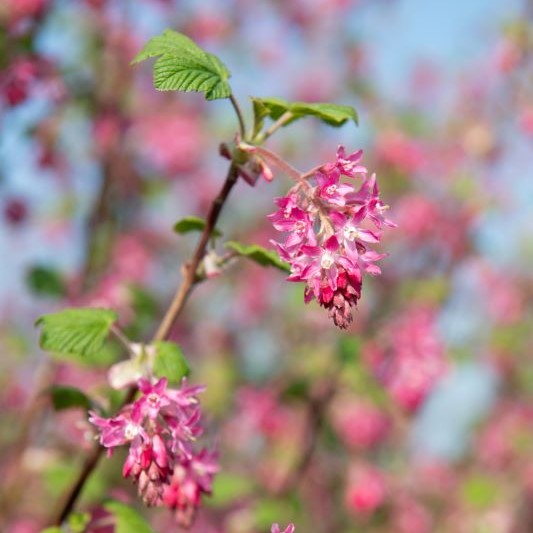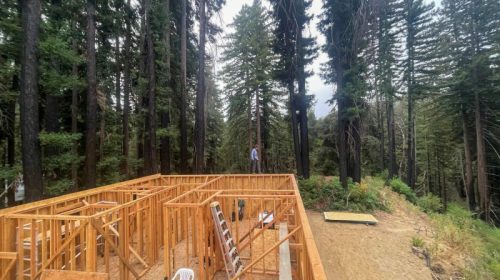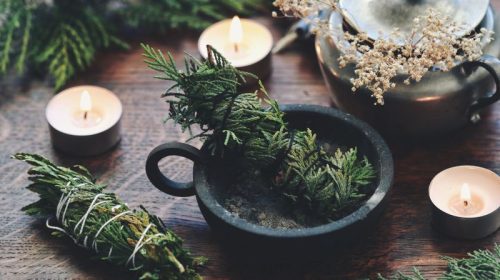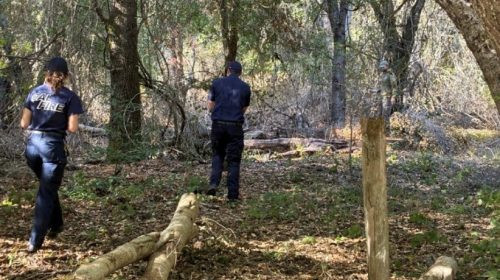Fire Resistant Planting
By Josh Reilly
It’s been just over four and a half years since the CZU fire. Some folks are back in new homes or will be soon. Many have moved elsewhere and are starting new gardens. So I offer these suggestions, with much respect, to encourage awareness of fire in your new plantings. You already have an almost impossibly complicated design matrix to consider, between extremes of temperature, pests, available light, soil conditions, deep shade and blazing Summer sun, color, shape, water needs and personal preferences. Then there are those occasional garden center impulse buys. Adding and prioritizing fire, however, may actually simplify the process.
There is no such thing as a fire-proof plant. All plants will be damaged by fire, some killed and others requiring many seasons to grow back. There are, however, quite a few that grow happily in the SLV, that are fire-resistant, i.e, less likely to propagate and spread fire. Many of these are fire-adapted and some require occasional fires to complete their life cycles. A great place for information about fire-resistant plantings is the Western Fire Chiefs Association at wfca.com.
Don’t look for the words “fire-resistant” on the nursery pot label. Wholesale nurseries are already filling labels with lots of other useful information. So, what attributes help make a plant fire-resistant? They tend to have leaves with high water content. They may have copious, watery sap. Some have an open-growth structure. For example, some Manzanitas grow this way; others have dense thickets of dry, dead interior wood. Ask your garden center staff which one is which. Thick bark is another fire-resistant asset. You may have seen coast redwoods in the forest with charred bark that are still going strong.
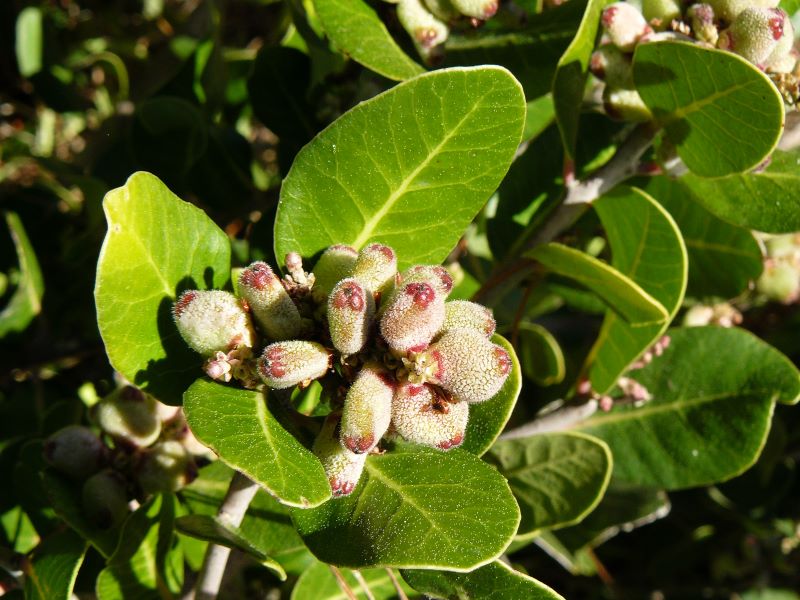
Lemonadeberry Rhus integrifolia in bloom. This fire resistant plant tolerates heat and can contribute to erosion control. (ePlant)
Here are a few examples of fire-resistant plants that may be available at our local nurseries and garden centers.
Grasses: Sadly, almost all perennial grasses, including CA natives make good fuel. Exceptions include long-lived, grass-like plants, such as the natives Dasylirion, and Nolina and the Australian grass tree (Xanthorrhoea). These have long, narrow, but graceful blade-like shoots that embers are not likely to ignite. Use caution planting Nolina. It grows slowly but eventually becomes massive.
Ground covers: Creeping phlox, Sedum (stonecrop), Cerastium (Snow in Summer) and creeping Manzanita. Manzanita and Sedum are also drought resistant. The other two will require a bit more Summer water.
Shrubs: Daphne, Ribes (Flowering Currant), Salix (willow), Rhus sp. Of these I have grown Ribes (R. sanguineum ssp). I revel in their soft, salmon-pink blossoms from late February until April. I have also grown regional native Sumac (Rhus integrifolia, “Lemonade Berry”). This lovely shrub has an open, angular form and boasts small pink blossoms, February until late March, and a soft, lemony fragrance. In all cases, fire resistance is much improved with regular pruning for light, air and the complete removal of dead wood
Trees – Rocky Mountain Maple (Acer glabrum), sheds the helicopter seeds that flutter earthward in October. It displays fine Fall color and will tolerate vigorous structural pruning, to maintain an open form. Western Catalpa, a small, common California landscape tree, is one I did not expect the WFCA to endorse. All those dry, dangly pods in Fall seem counter-indicated and a bit untidy. In full bloom though, it’s a devastating beauty, so I say, have at it.
Josh Reilly, aka Uncle Skip, writes about seasonal gardening from his home in beautiful Ben Lomond, California.
Featured photo at top of page: Ribes Flowering Currant (R. sanguineum ssp) feature soft, salmon pink and magenta blossoms in March and April.
***
Have local story or community news to share? The team at the San Lorenzo Valley Post welcomes your Santa Cruz Mountains news, story ideas, photos, and letters. Send us an email.
Sign up for our newsletter to stay connected to news and events in the Santa Cruz Mountains.
The San Lorenzo Valley Post is your essential guide to life in the Santa Cruz Mountains. We're dedicated to delivering the latest news, events, and stories that matter to our community. From local government to schools, from environmental issues to the arts, we're committed to providing comprehensive and unbiased coverage. We believe in the power of community journalism and strive to be a platform for diverse voices.

